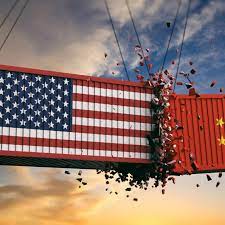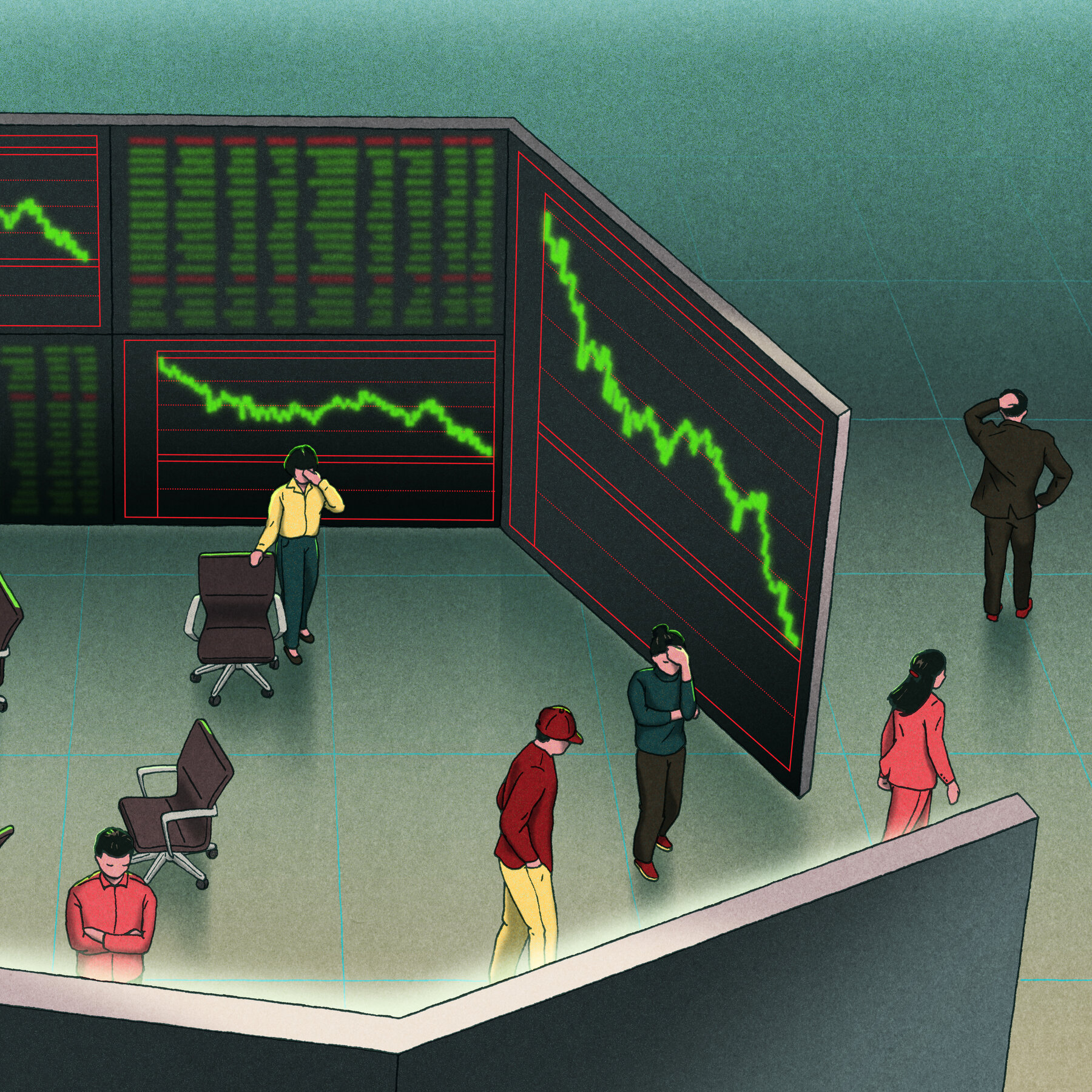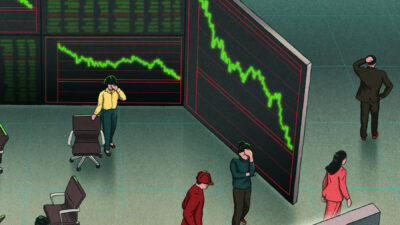EROME – The world is witnessing one of the most intense economic battles in history. The trade war between the United States and China has created ripples throughout global markets. It’s like a tug-of-war, where neither side truly emerges victorious. Instead of gaining ground, both nations, along with the world economy, are feeling the pain.
In this article, we’ll dive deep into the China Market Update: No Winners In A Trade War. We’ll look at how this trade dispute is shaping the global economy, the effects on key industries, and what might come next. Let’s unpack this complex situation and break it down so that it’s easy to understand.
Table of Contents
| Sr# | Headings |
|---|---|
| 1 | What is the Trade War Between China and the U.S.? |
| 2 | The Impact on China’s Economy |
| 3 | How the U.S. Economy is Affected by the Trade War |
| 4 | Global Markets: A Ripple Effect |
| 5 | The Role of Tariffs: A Double-Edged Sword |
| 6 | The Manufacturing Sector: A Battleground |
| 7 | Agricultural Products: Facing Major Challenges |
| 8 | Technology and Intellectual Property in the Crossfire |
| 9 | China’s Response: Economic Countermeasures |
| 10 | The Role of International Trade Agreements |
| 11 | The Long-Term Consequences for Global Trade |
| 12 | The Human Cost: Everyday People Affected |
| 13 | What Can Be Done to End the Trade War? |
| 14 | The Future of China-U.S. Relations |
| 15 | Conclusion: No Winners in a Trade War |
What is the Trade War Between China and the U.S.?
At its core, the trade war is a conflict over tariffs and trade policies between China and the U.S. It started when the U.S. accused China of unfair trade practices, including intellectual property theft, forced technology transfers, and currency manipulation. In response, the U.S. imposed tariffs on Chinese goods, and China retaliated by increasing tariffs on U.S. products.
The conflict has been a game of economic chicken, with both countries trying to outlast the other. But while this might seem like a simple fight over trade, the consequences are much more complex and far-reaching.
The Impact on China’s Economy
China, as the world’s second-largest economy, has faced significant challenges during the trade war. While the country’s growth slowed due to tariffs, it didn’t collapse as some predicted. However, the trade war highlighted some underlying issues within China’s economy.
The Chinese government has had to adjust its economic policies, implement stimulus packages, and find new markets for its goods. The trade war has also accelerated China’s shift towards technology and services, trying to reduce its reliance on exports. But this has not been an easy transition, and many sectors continue to suffer from the effects of tariffs and global uncertainty.
How the U.S. Economy is Affected by the Trade War
The U.S. economy, often seen as the aggressor in the trade war, is not without its own set of problems. The imposition of tariffs on Chinese goods has made everyday items more expensive for American consumers. Goods like electronics, clothing, and food products saw price increases, which led to inflation concerns.
Additionally, American farmers were hit hard when China retaliated with tariffs on U.S. agricultural products. Soybeans, pork, and other exports faced restrictions, resulting in financial losses for American farmers who had to find new markets or absorb the costs themselves.
Global Markets: A Ripple Effect
The China-U.S. trade war has caused a domino effect, influencing economies far beyond the two nations. Countries that depend on trade with China or the U.S. are facing challenges. Emerging markets, in particular, have been hit by the uncertainty, with some nations losing out on trade deals and investments.
The global supply chain is also feeling the strain, as companies are forced to find alternative suppliers or adjust their manufacturing processes. The consequences are felt across industries, from automotive to electronics to agriculture.
The Role of Tariffs: A Double-Edged Sword
Tariffs are often seen as a weapon in trade wars, meant to make imports more expensive and encourage consumers to buy domestic products. However, tariffs have a double-edged sword effect. While they may hurt the opposing country’s economy, they also harm the nation imposing them.
In the case of the U.S., tariffs raised the cost of Chinese-made goods. This led to higher prices for consumers and businesses that rely on Chinese products. For China, tariffs slowed exports, which meant fewer goods being sold overseas. Both nations suffered, and global markets were shaken by the uncertainty surrounding trade policies.
The Manufacturing Sector: A Battleground
Manufacturing has been one of the hardest-hit sectors in the trade war. For China, the loss of access to U.S. markets has been particularly damaging for industries like electronics, machinery, and automotive. Many companies have been forced to scale back operations or relocate to other countries to avoid the high tariffs.
In the U.S., manufacturers who rely on Chinese goods faced increased costs. Many companies found it difficult to find alternative suppliers for certain components, leading to delays and disruptions in production. The manufacturing sector has become a key battleground in this trade war.
Agricultural Products: Facing Major Challenges
One of the most visible impacts of the trade war has been on agricultural products. China’s retaliation with tariffs on U.S. agricultural goods, particularly soybeans, pork, and grains, has been devastating for American farmers. China was one of the largest buyers of U.S. agricultural exports, and the trade war has forced farmers to look for new markets, often at lower prices.
The uncertainty in agricultural markets has not only affected U.S. farmers but also created instability in global food supply chains, with countries relying on trade deals to secure access to essential products.
Technology and Intellectual Property in the Crossfire
Technology has become one of the focal points of the trade war. The U.S. has accused China of stealing intellectual property and forcing companies to hand over technology in exchange for market access. This has led to tensions between the two countries, with both sides imposing restrictions on tech companies.
For instance, companies like Huawei have been caught in the middle, facing restrictions on access to U.S. technology. This has disrupted global supply chains in the tech industry, as companies are forced to adjust their operations to comply with new regulations.
China’s Response: Economic Countermeasures
China has implemented several countermeasures to mitigate the effects of the trade war. One of the most notable has been the devaluation of the Chinese yuan. By making its currency cheaper, China hoped to offset the impact of tariffs and make its exports more attractive to foreign buyers.
In addition, China has sought to diversify its trading partners, striking deals with countries in Asia, Africa, and Europe to reduce its dependence on U.S. markets. However, these efforts have not fully replaced the lost business with the U.S., leaving China in a difficult position.
The Role of International Trade Agreements
International trade agreements play a critical role in shaping the outcome of the trade war. China has been looking to strengthen its ties with other countries through agreements such as the Regional Comprehensive Economic Partnership (RCEP). Meanwhile, the U.S. has sought to renegotiate trade deals, including the USMCA (United States-Mexico-Canada Agreement), to secure better terms for its economy.
These agreements can help buffer some of the negative effects of the trade war, but they cannot fully offset the damage caused by tariffs and economic uncertainty.
The Long-Term Consequences for Global Trade
The trade war has introduced a level of uncertainty into global trade that is unlikely to disappear anytime soon. Companies are hesitant to invest in an environment where tariffs can change overnight, and nations are rethinking their reliance on global supply chains.
The long-term consequences could include a shift away from globalization, with countries focusing more on self-sufficiency and regional trade agreements. This could fundamentally alter the landscape of global trade.
The Human Cost: Everyday People Affected
It’s easy to get caught up in the politics and economics of a trade war, but it’s important to remember the human cost. Everyday people, from farmers to factory workers, are bearing the brunt of the economic fallout. Jobs have been lost, prices have risen, and livelihoods have been disrupted.
The trade war has not only affected businesses but has also created financial insecurity for millions of individuals around the world. This reminds us that in any economic conflict, there are no real winners—just varying degrees of loss.
What Can Be Done to End the Trade War?
While the trade war shows no signs of ending soon, there are steps that could be taken to ease tensions. Diplomatic talks, trade negotiations, and compromises on both sides could help pave the way for a resolution. The key is finding a balance where both countries can meet their needs without resorting to economic warfare.
The Future of China-U.S. Relations
Looking ahead, the future of China-U.S. relations remains uncertain. Both nations will likely continue to jockey for economic dominance, but the hope is that they can find a way to collaborate rather than compete. A peaceful resolution to the trade war would benefit not just the U.S. and China, but the entire global economy.
Conclusion: No Winners in a Trade War
In conclusion, the ongoing trade war between China and the U.S. is a classic example of a lose-lose situation. While both countries have gained some short-term advantages, the long-term effects have been detrimental to their economies and the global market. There are no real winners in a trade war, just a cycle of retaliation that only serves to harm the world’s economy.
As we move forward, it’s crucial to seek solutions that foster cooperation rather than conflict. Only by working together can we build a more stable and prosperous global economy.
FAQs
- What is the main cause of the trade war between China and the U.S.?
The main cause is the disagreement over trade practices, including intellectual property theft, tariffs, and trade imbalances. - How has the trade war impacted global markets?
The trade war has caused volatility in global markets, with disruptions in supply chains and increased uncertainty affecting international trade. - What role do tariffs play in the China-U.S. trade war?
Tariffs are used as a tool to make imported goods more expensive, with the goal of encouraging consumers to buy domestic products. However, they have caused economic harm to both sides. - How has China responded to the U.S. trade war?
China has devalued its currency, implemented counter-tariffs, and sought new trade partners to mitigate the impact of the U.S. tariffs. - Is there a way to end the trade war between China and the U.S.?
Diplomatic talks, trade agreements, and mutual concessions could help bring an end to the trade war and reduce economic tensions.










